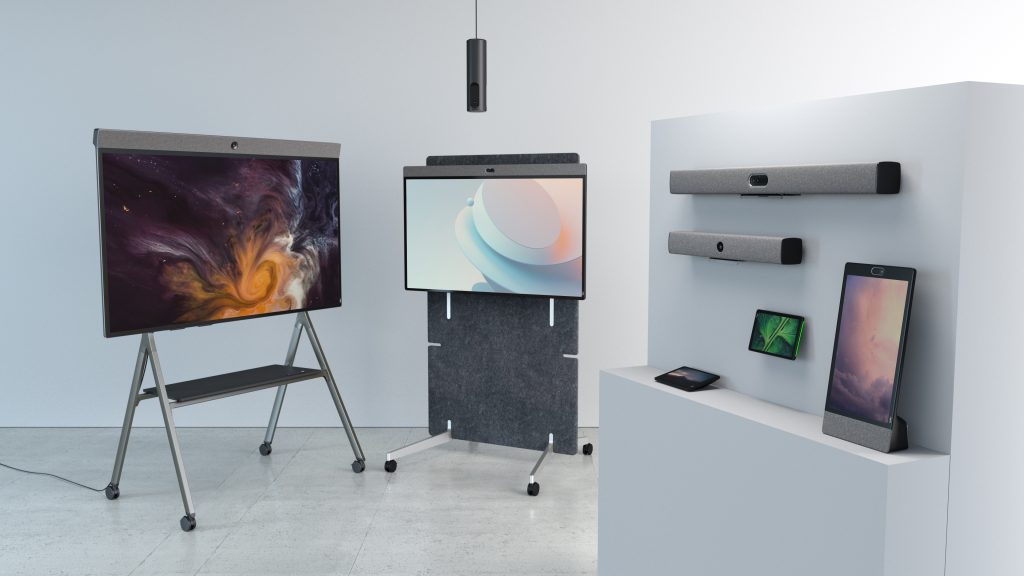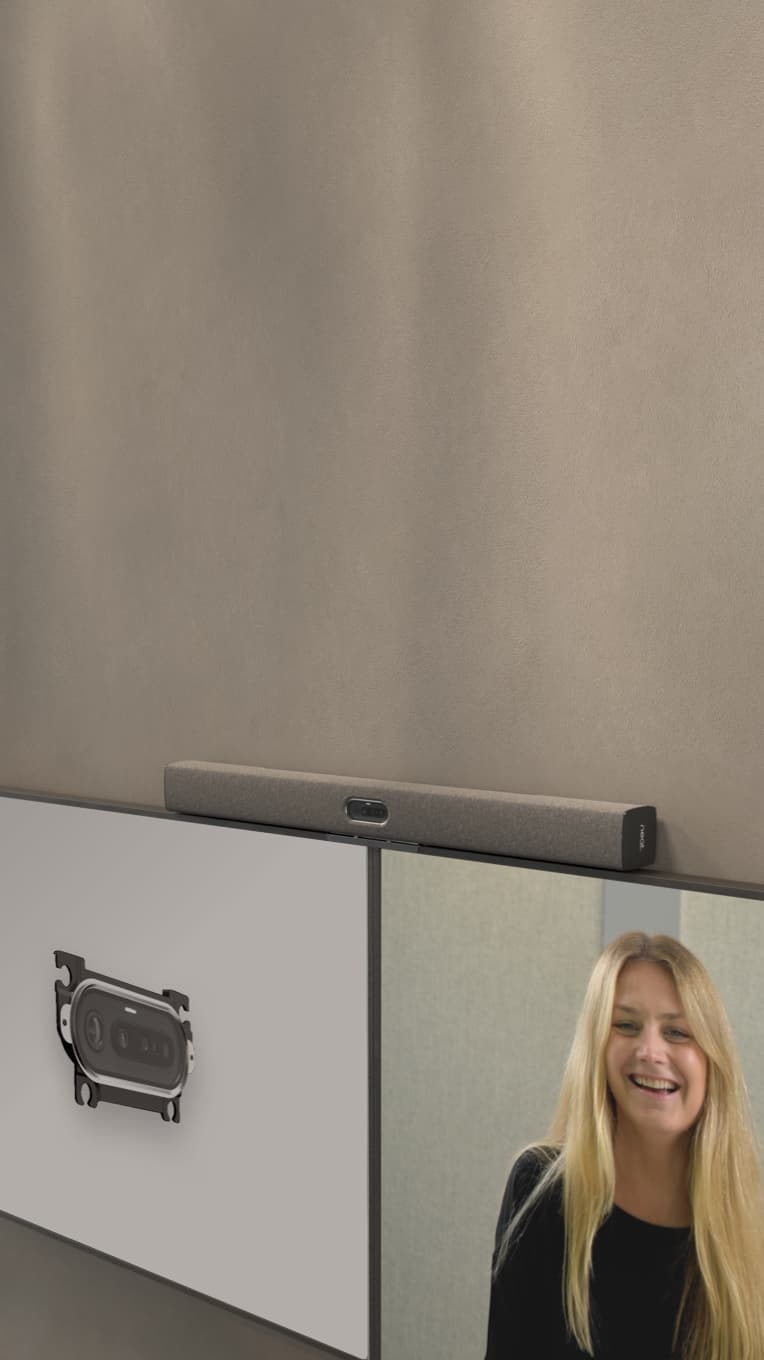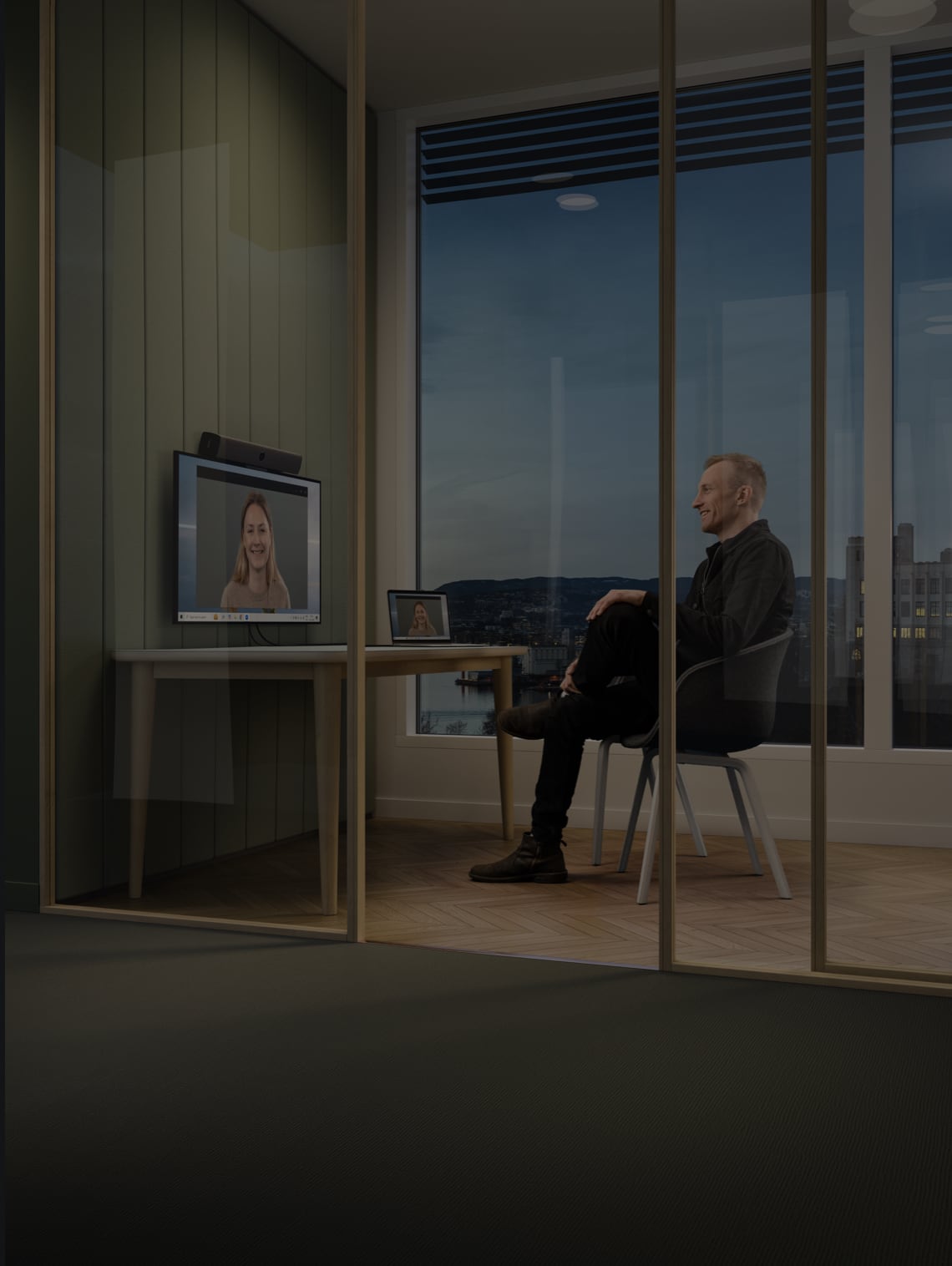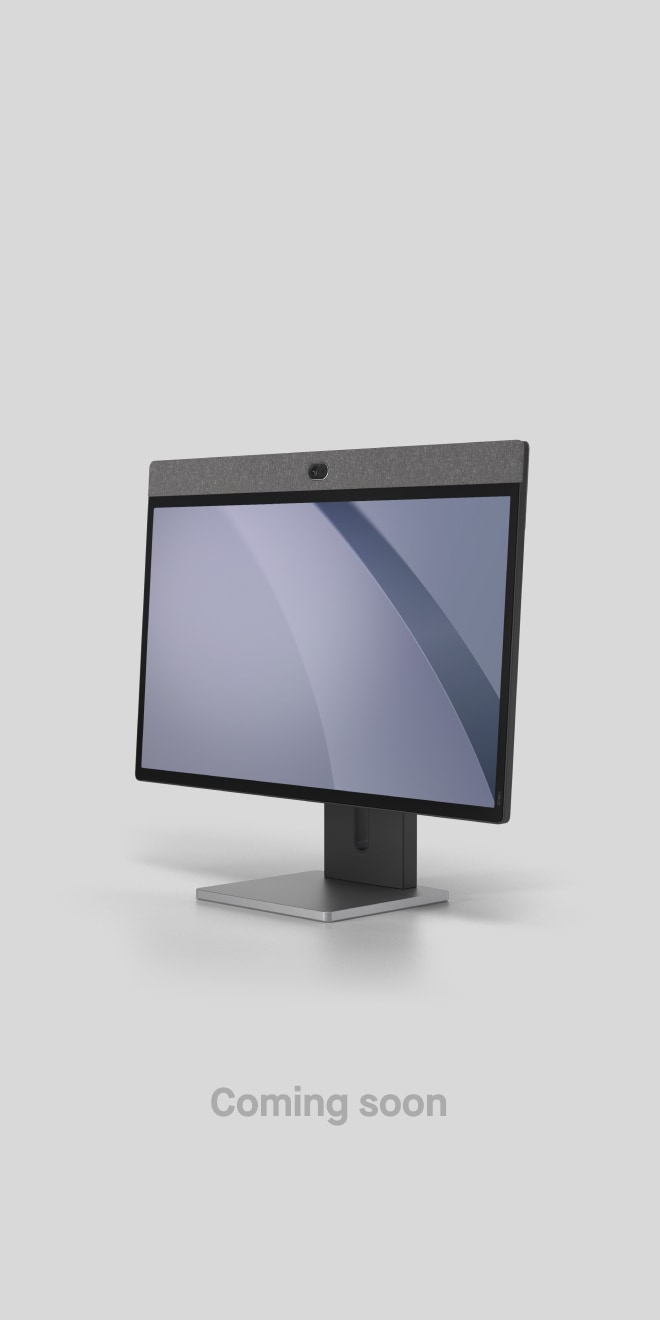Conference Room AV Checklist for Hybrid Offices
Neat, Jul 17, 2023

Hybrid conference rooms play a crucial role in bridging the gap between on-site and remote employees, provided you have the right equipment available. Use this checklist to build a conference room audio-visual system that supports hybrid meetings.
Key Takeaways:
- A conference room audio-visual system requires basic equipment, including a monitor, microphone, speakers, camera and video conferencing software.
- Take into account your budget, the meeting room’s physical setup and layout, equipment positioning, cord organization and system configuration.
- Routine maintenance and troubleshooting keeps your equipment working longer and can reveal when it might be time to upgrade.
1. Choosing the Right Conference Room AV Equipment
Hybrid meetings cater to two different audiences: in-person teams and remote colleagues. Your conference room audio-visual system should support both.
Basic Conference Room AV Equipment
At a minimum, a hybrid conference requires:
- Screen/monitor
- Microphone
- Speakers
- Camera(s)
- Video conferencing software
- Lighting
- Meeting room schedule display (optional but helpful)
Also, consider furniture and how to arrange it so your in-house team can equally participate in video conferences.
See our in-depth guide on choosing equipment for hybrid meetings for more details.
Budget
When choosing your equipment, take into account your budget and specific technology requirements. All-in-one systems like Neat can be more budget-friendly compared to other technology because you get everything you need in a single device.
Scalability
Also, consider the ability to expand or change your equipment. The flexibility to add to your AV setup as your business needs change can help you avoid buying brand-new systems in the future. Portable options can make your AV equipment more accessible to others, plus they can be used in more than one space.
2. Setting Up Conference Room AV Systems
Some AV equipment will be hard-wired into your hybrid meeting space. Other options might be “plug and play” with simple connections that don’t require extensive setup. In either case, you’ll need to consider the right setup to maximize participation.
Positioning your equipment
Where you install your equipment impacts the overall quality of your hybrid meetings. For example, you can set up your AV system so the camera captures each of your in-person attendees. Neat Bar shows all attendees equally so meetings feel more like in-person conversations.
You also want a microphone that’s powerful enough to pick up each person’s voice no matter where they are in the room. Microphones can vary in range, sensitivity and sound quality. Ideally, your microphone will clearly capture the speaker while simultaneously tuning out background noise and maintaining sound quality when two people are talking over each other.
Positioning your system also takes lighting into account. Avoid mounting your cameras opposite windows, as this will backlight the speaker and cast unwanted shadows.
Organizing your cables and components
Maintaining a clean, professional appearance during meetings extends to the meeting space itself. Organizing cables and equipment can make the room feel cleaner and less cluttered, lending to more productive meetings.
Neat all-in-one devices support an organized meeting space by integrating components and minimizing cords and connections.
Configuring your system
Easy-to-use systems ensure meetings start on time and encourage more people to use the meeting space. Systems with a one-touch meeting launch or an intuitive meeting room controller create seamless user experiences regardless of technical skills.
3. Maintaining/Troubleshooting Conference Room AV Systems
Your conference room audio-visual system will require cleaning, regular testing and maintenance. The amount of work involved can vary from system to system. Some things to look for include:
- Check all mounting hardware
- Check for video conference software updates
- Clean the camera lens
- Dust the monitor, speakers/soundbar and other components
- Check all connections
- Test image and audio quality
- Test the meeting room controller (like Neat Pad)
If a problem occurs, refer to the manufacturer’s guide to troubleshoot common problems. Common issues with conference room audio-visual systems include, but are not limited to:
- Poor or no internet connection
- Disconnected or loosely fitting cables
- No sound and/or video
- Static, echo or other background noise
- Poor audio or video quality
Integrated devices give you fewer components to troubleshoot, which could help you pinpoint issues faster.
In some cases, you might consider upgrading your audio-visual equipment as better solutions become available. Programs like Neat as a Service make it easy to get high-quality video conferencing systems without massive upfront investments, allowing you to upgrade as needed.
4. Enhancing Collaboration with High-Quality AV Systems
Basic video conferencing equipment, such as built-in laptop cameras and microphones, enable hybrid meetings to happen. But higher quality AV systems like Neat lead to better productivity, communication and collaboration, helping you get more from every meeting.
Gone are the days of grainy images and distorted audio. Modern video conferencing technology feels more like in-person conversation and makes geographical barriers a thing of the past. Teams can collaborate seamlessly using whiteboards and screen-sharing, fostering a sense of unity and enabling them to work together as if they were in the same room. This saves time and money on travel expenses while allowing companies to tap into talent from different parts of the world, resulting in diverse perspectives and innovative problem-solving approaches.
Also, high-quality video conference systems improve communication by showing non-verbal cues that traditional phone calls or emails lack. Neat cameras capture small nuances like gestures and facial expressions that other cameras do not. Personal connections are easier to build, allowing teams to better interact with each other.
For companies conducting hybrid meetings on a regular basis, it’s worthwhile to consider quality alongside functionality. Better quality means getting more from your meetings and justifying a bigger AV equipment investment.
5. Future Trends and Innovations in Conference Room AV Technology
AV technology is constantly evolving, especially as more companies shift to remote and hybrid work.
One trend is the growing popularity of wireless connectivity. With wireless AV technology, users can seamlessly connect their devices to conference room displays with just a few clicks — no tangled wires or complicated setups required.
Another trend expected to gain momentum is augmented reality (AR) integration in conference room AV systems. AR technology allows users to overlay virtual objects onto real-world environments, creating an immersive experience for participants. Imagine being able to visualize 3D models or charts right on your conference table during a presentation. This level of interactivity can greatly enhance engagement and understanding.
With the advancement of machine learning algorithms and deep neural networks, AI has found its way into automating and enhancing audio-visual systems, too. Traditionally, complex AV setups required manual configuration and adjustment by trained professionals. However, AI-powered automation can now handle these tasks efficiently and accurately. AI also analyzes data from multiple sources such as cameras, microphones and sensors. This enables AI algorithms to automatically adjust lighting levels, sound quality, camera angles and other elements to optimize the overall experience.
Keeping an eye on these and other trends can help you better determine when it’s time to upgrade your AV system and how to allocate your upgrade budget.
6. Neat’s Solutions for Your Conference Room AV Needs
Neat continues to look to the future to design conference room audio-visual systems that meet the needs of today’s hybrid offices. We’ve designed our integrated video conferencing solutions for optimal experiences, including crystal-clear audio and video that mimics in-person conversation for better collaboration. With everything you need in one box and a full library of installation documents, images and tutorials, Neat solutions take just minutes to install and use. Get a fully functioning hybrid conference room without complicated setups and configurations—Neat takes the guesswork out of creating meeting spaces so you can get back to what you do best.
Explore Neat devices and how our customers are using them in their hybrid spaces to create the ultimate meeting experience.

FAQs
How do I choose the best conference room AV system for my hybrid office?
Assess your specific needs and determine which features are essential for your conference room setup. For example, do you require high-quality audio and video capabilities? Are you looking for seamless integration with other devices or platforms? Also, consider scalability. It’s important to invest in an AV system that can adapt to future changes and accommodate different meeting sizes. Look for systems that offer expandability and compatibility with various devices. Systems that are user-friendly will also help you get more from your investment.
What are the key steps for maintaining and troubleshooting my AV system?
Regular cleaning is essential for maintaining your AV system. Dust can accumulate on the equipment, clog vents and cause overheating. Use appropriate tools to clean the various components of your system, such as microfiber cloths for screens and compressed air for hard-to-reach areas. Keep cables organized and free from tangles to prevent interference and signal loss. Stay updated with firmware upgrades to avoid software-related issues. If an issue occurs, try to isolate it so you’ll know where to start troubleshooting.
Can I install and set up a conference room AV system myself, or should I hire a professional?
It depends on the complexity of your equipment. Some systems, like Neat, are designed to be installed without the assistance of a professional. If you’ve purchased individual components, you may want to consult with a professional installer.
How do I resolve common connectivity issues with my conference room AV system?
Check all of your physical connections. Make sure your system is connected to the internet and has a strong, stable connection. Reboot the system and retest for connectivity. Check for software or firmware updates. If you can pinpoint the issue (e.g., an issue with the microphone or monitor), you can do further troubleshooting specific to that component.
What factors should I consider when upgrading or expanding my conference room AV system?
Assess the current needs and requirements of the conference room. Evaluate the size of the room, the number of participants typically present and the types of meetings conducted. This will help determine if you need to purchase additional equipment or upgrade existing equipment. Also, consider how much you’re willing to spend without jeopardizing other essential operations. Be forward-thinking about new purchases and investments to “futureproof” your system and ensure it will continue to serve you for years to come.
Sources:
Servicing & Maintenance. Toomey.
How interactive, real-time AR could change the future of video calling. VentureBeat.
The use of Artificial Intelligence in the Audiovisual Sector. European Parliament.






